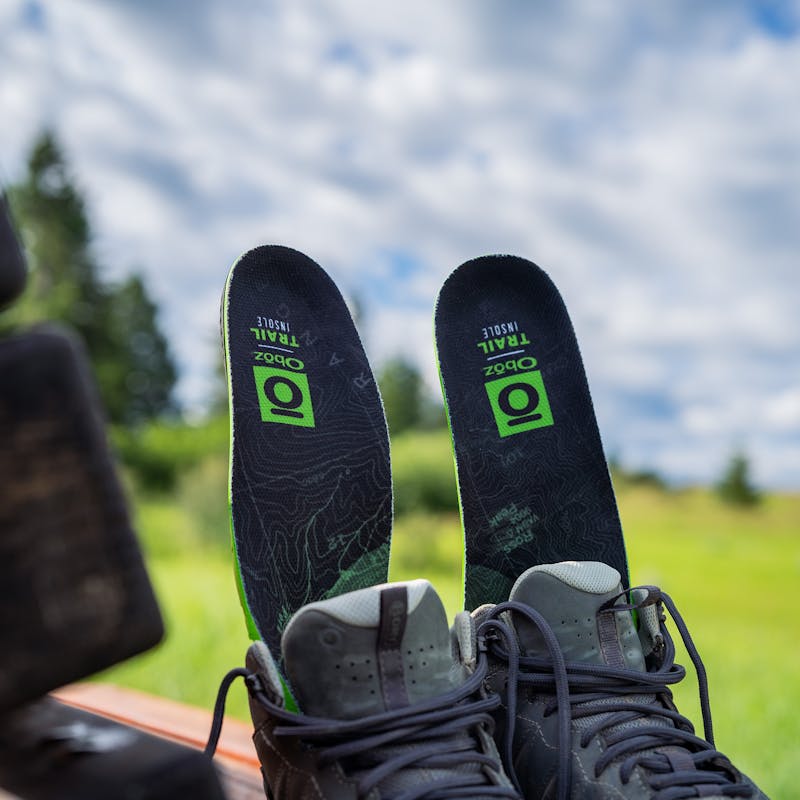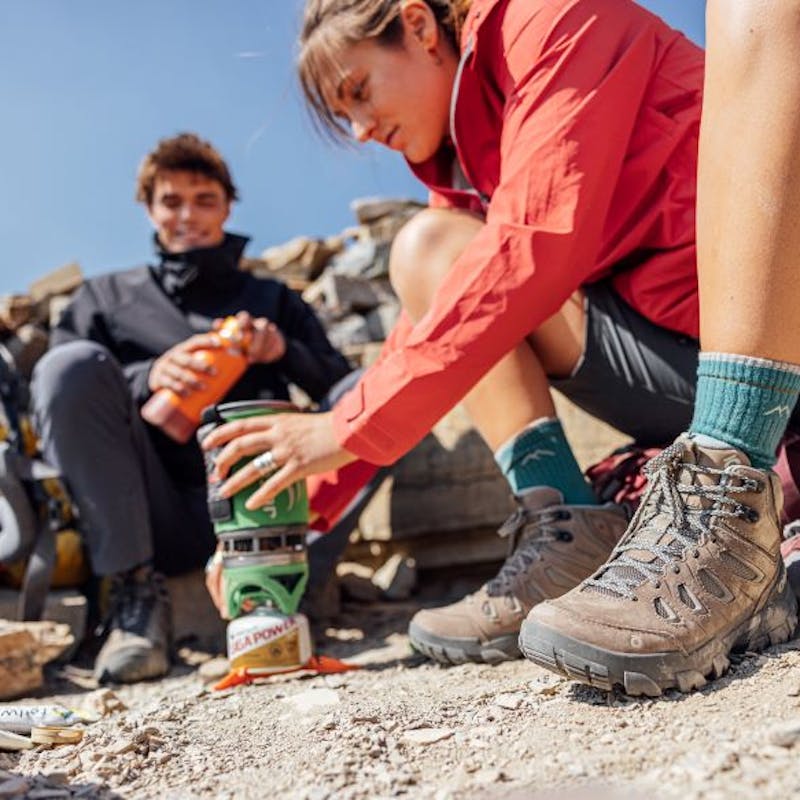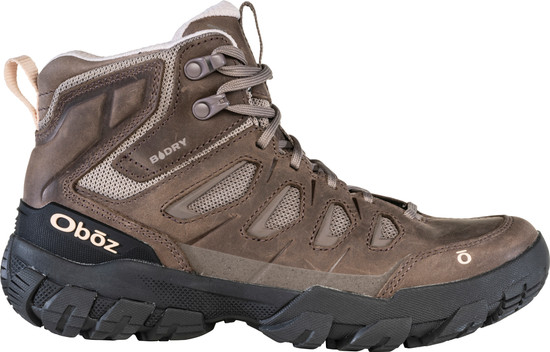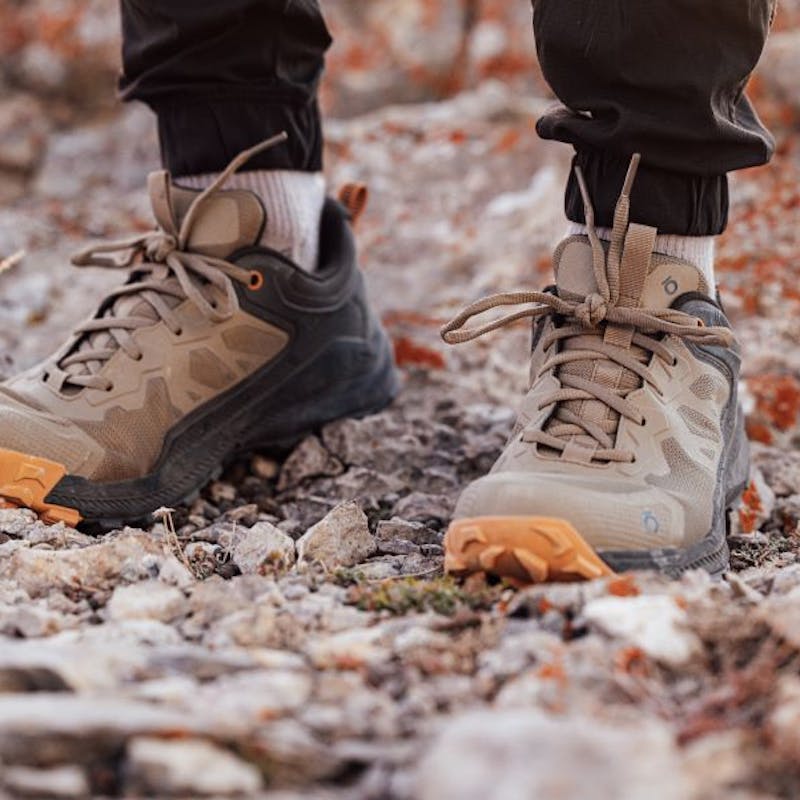What's the difference between a mid-height and a low-height shoe?
We sat down with Parker, an Oboz Training and Education Guru to breakdown the differences between a mid and low height hiking shoe.
Q: Ok, Parker. Mid, or low?
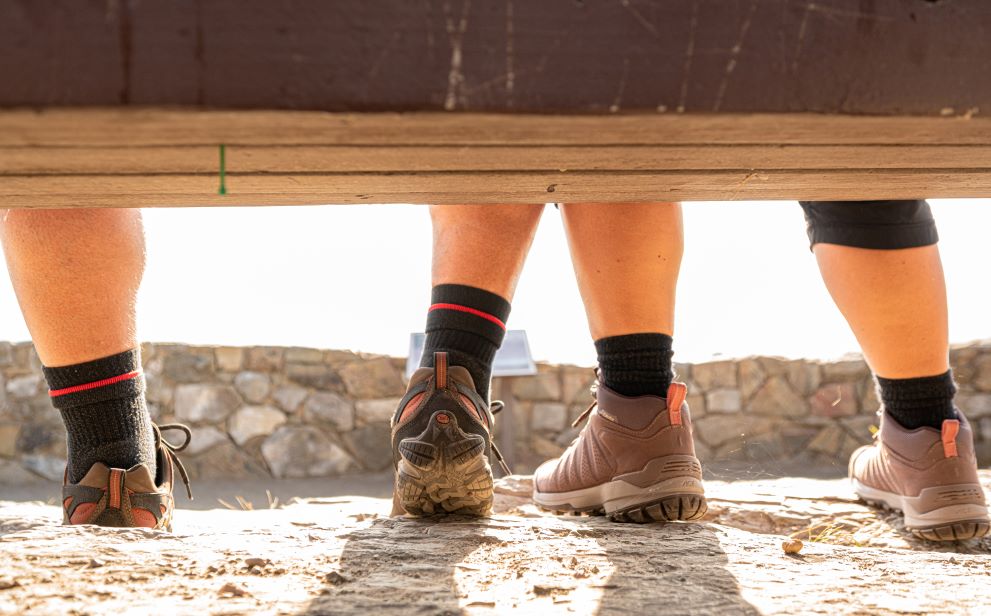
P: When I worked on the floor, I would answer, “Whatever is most comfortable.” It's really based off of your own comfort. Some people prefer to have their ankles enclosed with the mid top boot. That being said, it's a common misconception that ankle support comes from a mid-top boot.
In reality, ankle support comes from the foundation of the shoe. Styles such as the Katabatic and the Sawtooth all have a nice wide base in the outsole, coupled with the O FIT Insole®. Combined, these factors keep your foot in a neutral position helping to reduce the chances for the muscles in your foot to micro-fire. Micro-firing is when muscle groups in your feet fire off to keep you and your foot stable, unbeknownst to you. Our O FIT Insole® puts your foot into a neutral position, keeping it nice and relaxed, with low risk of micro-firing. This neutral position also lets your foot articulate naturally.
With a supportive base you can then add the mid-top element for added ankle support. Now that your foot is supported, relaxed, and naturally positioned, you'll have a shoe that keeps your ankle from rolling.
Q: What is micro firing?

P: If you’re wearing something that doesn’t have good arch support like an Oboz Insole, more than likely your foot is micro-firing. This is additional work the small muscles in your foot need to do because of lack of stability. This can also come from too much cushioning, which is why you'll find that Oboz styles don't have high amounts of cushion. All Oboz styles aim to keep your foot in a neutral position and support your arch so you can go further longer and your feet don’t get fatigued too quickly.
Q: What's wrong with too much cuchioning?
P: Some insoles with added cushioning aren't good for your feet! Sure, feels great right out of the box, but after a month of wearing them, you’ll notice more ailments start to pop up.
Q: Do I need a mid-height to support my weak ankles?

P: Ankle support comes from the foundation of the shoe, from within. Once you stabilize the foot, that’s when your feet are best supported. Ensuring that you have a properly fit shoe is key to keeping your ankles stable.
Many thru-hikers choose low height shoes with proper support in the foundation. For example, the Sawtooth Low would be a great shoe on a thru-hike. The Sawtooth provides you with a stable base coupled with the Trail Insole. If you go with the Sawtooth Mid in this situation, you’re getting a little bit of added benefit, but it’s not going to make or break your trip. The low will still perform really well.
Q: Are there terrains where you should think about a mid versus a low?
P: Mid top boots can be helpful in situations with scree fields or more gravely trail where debris could get inside your shoe. The same goes for the winter seasons; mid-top footwear can help keep snow and water out of your boot. An alternative to mid-height is a good gaiter if you’re concerned about stuff getting inside your boot.
Q: Does a mid-height shoe mean added warmth?

P: You’re probably splitting hairs at this point, but a mid height boot will trap a little more heat. You’re also probably wearing a crew sock, with a mid top which will add warmth. If you’re concerned with your feet getting hot, you can combat that with finding a non-waterproof style like the Sawtooth II Mid. If you’re looking for a winter hiking boot, I recommend sticking with waterproof and/or insulated boot options such as the Bridger. For maximum warmth you can also consider a thermal insole like the Oboz Thermal Insole.
Q: What height sock would you recommend for a mid-height boot?
P: Traditionally, hikers opt for a crew sock when wearing mid-height hiking shoes. Nowadays many companies are creating a sock called a "mid-crew" which is a good option if you don't want your sock to show over your boot but still want protection from the cuff. With a mid-crew, the top of the sock will hit right at the top of the cuff of your boot.
Q: Lots of pros for mids. Any pros for lows?

P: Remember, it's all about being comfortable! Some people can’t stand having their ankles enclosed by mid-height boots. I’m one of those people! But, I find with Oboz shoes, that my ankle doesn’t roll as much because my feet are already supported by the Oboz Trail Insole.
Low hiking shoes have a more athletic feel if you don’t want the height of a mid boot. Another consideration is weight. If you’re doing a longer trip and are concerned about weight, a low-height, mid-weight hiking boot could be the way to go. Regardless, it really comes down to what feels most comfortable for you.
Ultimately, you should choose the shoe that feels the best for you. If you need more help choosing, consider heading to the Oboz shoe finder. Other ways to learn about the different styles are to subscribe to our newsletter and follow Oboz on Instagram. These platforms will keep you up to date on our latest styles and information.

